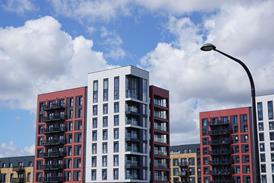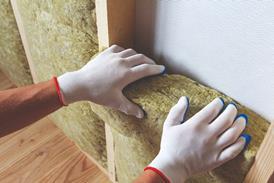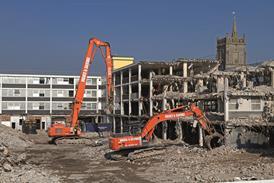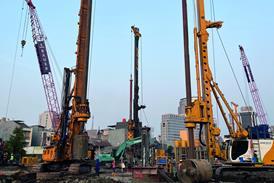With sustainable development becoming fashionable, it is important that we learn from those often unrecognised, undervalued initiators who have been experimenting with sustainable buildings and services since the 1960s. Thirty years on, and we are facing the stark reality of a changing climate on a massive scale which, even if we act now, will get worse before it gets better.
The early framework
The last 30 years can be characterised under the focal headings of work, folk and place. The 1960s was the decade of Harold Wilson's "white heat of technology" (work), that would provide for all human needs. By the 1970s science had become the great threat, not the great hope, and the focus shifted towards a more humanist (folk) based society.
By the mid-1980s and 1990s, health and safety issues led to a shift towards risk assessment (place). By the late 1990s, all three historically separate issues became bound together in a common goal: quality and value – the essentials of sustainable development.
The thirty year journey has not been accident-free. For example, the decade which ushered in Concorde and man on the moon, also witnessed the growth in so-called alternative technology: Denmark's wind programme, the Wallassey School and various Scandinavian low-energy projects were success stories.
Meanwhile, the UK mainly resorted to a high-tech/low-tech polarisation. Cambridge University spent thousands of pounds developing a model of an autonomous house, while the hands-on Streetfarmers spent £1500 building an actual autonomous house, the Skive Windmill House.
Granada Television investigated autonomy with a family self-building their dream home. Thirteen programmes covered 13 technologies, leading to a solar roof providing 2% of the energy, heat recovery from the cooker (35%) and good insulation standards. It demonstrated simple energy efficiency strategies, but they were resisted by steel and glass-obsessed architects.
In the 1970s the Architectural Association and the Hull School of Architecture experimented successfully with alternative technology. They also produced some heroic cock-ups, which would be funny were they not being repeated by others in the 1990s. Then, as now, solar collectors heated the sky, windmills shed their blades to distant horizons and methane digesters needed more input heat than their calorific output.
Despite all this some scales have emerged. Wind and wave power has optimised at 200 kW. Passive solar design has become optimised by reducing north-facing window area while maximising south-facing window area. Absolutes are no longer important: a few degrees off-south is fine, while serried ranks of passive solar houses facing the equator is unnecessary – not that planners realise this.
Active solar power was, and remains, a problem in terms of its payback period. Self-build collectors are the most viable. More recently the value of hybrid systems (gas-solar, for example) has emerged.
Latterly the greenest technology was considered to be no technology at all, since good building physics and good climatic envelopes could obviate the need for energy-hungry systems. Whether it be the sixties rhetoric of "starting with a heating load" or the nineties rhetoric of "starting with a cooling load", the principle is the same: don't do well what may not need to be done in the first place.
People and communities
During the 1970s and 1980s, many community projects demonstrated that there is life beyond the autonomous house, and economies of scale often absent in individualised self-sufficiency.
Internationally, conviction groups emerged with idealistic demonstration centres. The Centre for Alternative Technology in Wales is arguably the most evolved, but there are similar centres at Findhorn in Scotland, Farrellones in the USA, and the New Alchemists in Canada. Steyerberg in Germany and Bkoteket in Norway were also significant projects identifying alternatives for families and communities to ever-expanding consumerism.
Alongside these initiatives were other more mainstream projects which were more widely appreciated on the grounds of good practice and sound economics. These included Schafbrühl and Kiel Hassee in Germany, Gänserndorf in Austria, numerous eco-villages in Sweden and (latterly) Fairfield in Scotland.
All these projects had significant sustainability agendas and shared many technical aspects, such as eco-labelled materials, provision of a healthy indoor climate, passive heating and ventilation systems, and permaculture, using recycled elements as well as design for recycling, and low embodied energy as well as low energy in use. All these objectives shared costs within conventional yardsticks.
As these various strands developed they moved out beyond the scope of the novice, largely because the cost issues demanded design integration.
The 1980s and beyond
The 1980s became the decade of health and safety, where it was necessary to address the problems of toxicity, important as much for front line construction workers as for downstream building users.
There are two key factors in toxicity: that which is inherent to the specified products, services and finishes, and that which will evolve through time, either through lack of maintenance or through use of cleaning and other substances.
While sick building syndrome is generally understood in the 1990s, we are still struggling to articulate what comprises the healthy building. To this end a few practices developed an approach which looks at buildings as a cyclic, non-linear process – building as a process not a product.
The nineties to the noughties
So does the past teach those designing for a sustainable future? In general terms we must take aspects from each of the foregoing three decades. That means less rhetoric and more respect for precedence. Sustainable buildings should be regarded as an advanced class, combining design in a more holistic way than is the current norm.
While the 1960s and 1970s pointed to good science rather than technology, the 1970s and 1980s user and community involvement were key to good building practice and need to be reasserted. Similarly, the 1980s and 1990s gave us the health and safety agenda, where at least it has the potential to produce healthier buildings and building practice. What is required in the next century is a "no regrets" approach to building, considering the four essential principles of ecology: all things are connected, everything must go somewhere, nature knows best, and there is no such thing as a free lunch.
Eco-design should be an approach, not a style – an attitude of mind rather than something extra to consider. Thinking and acting holistically, throughout the industry, will produce genuinely sustainable construction.
Source
Building Sustainable Design
Postscript
Howard Liddell is with Gaia Architects in Edinburgh (telephone: 0131-557 9191).



















